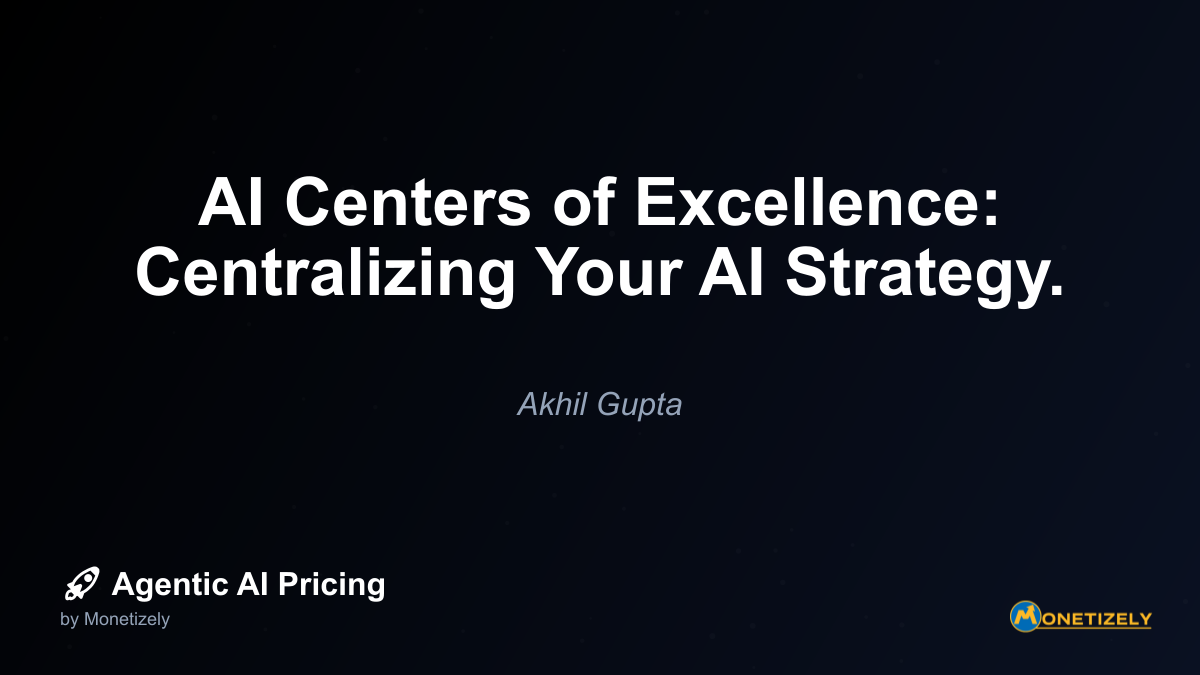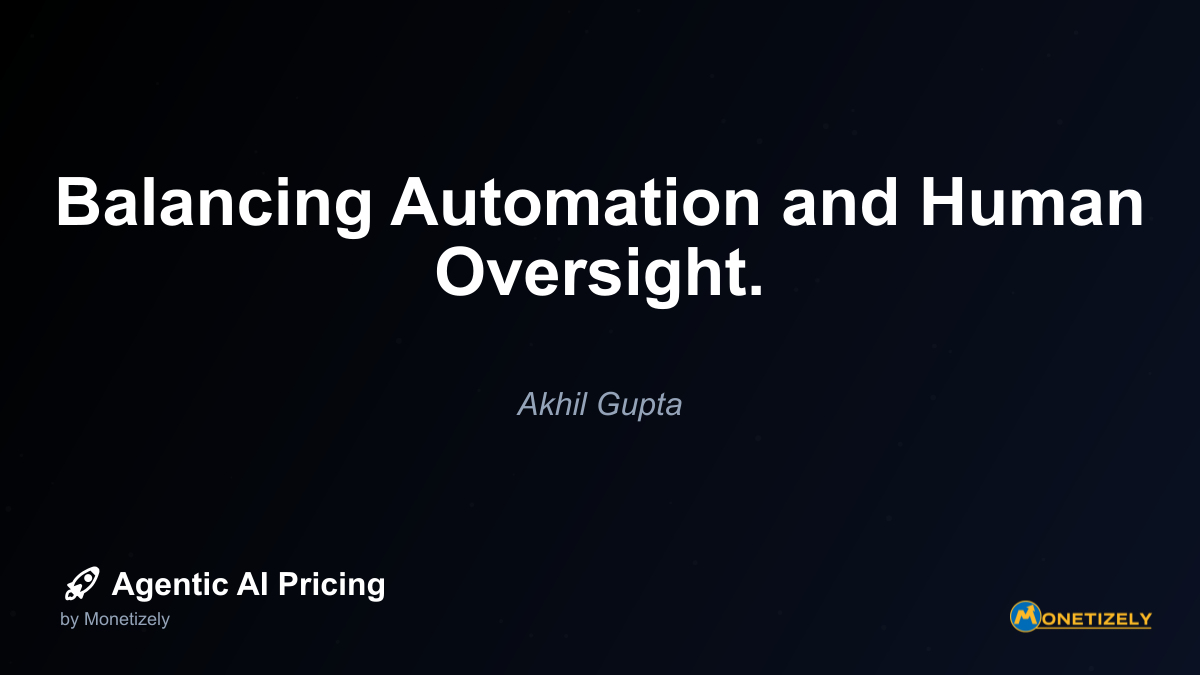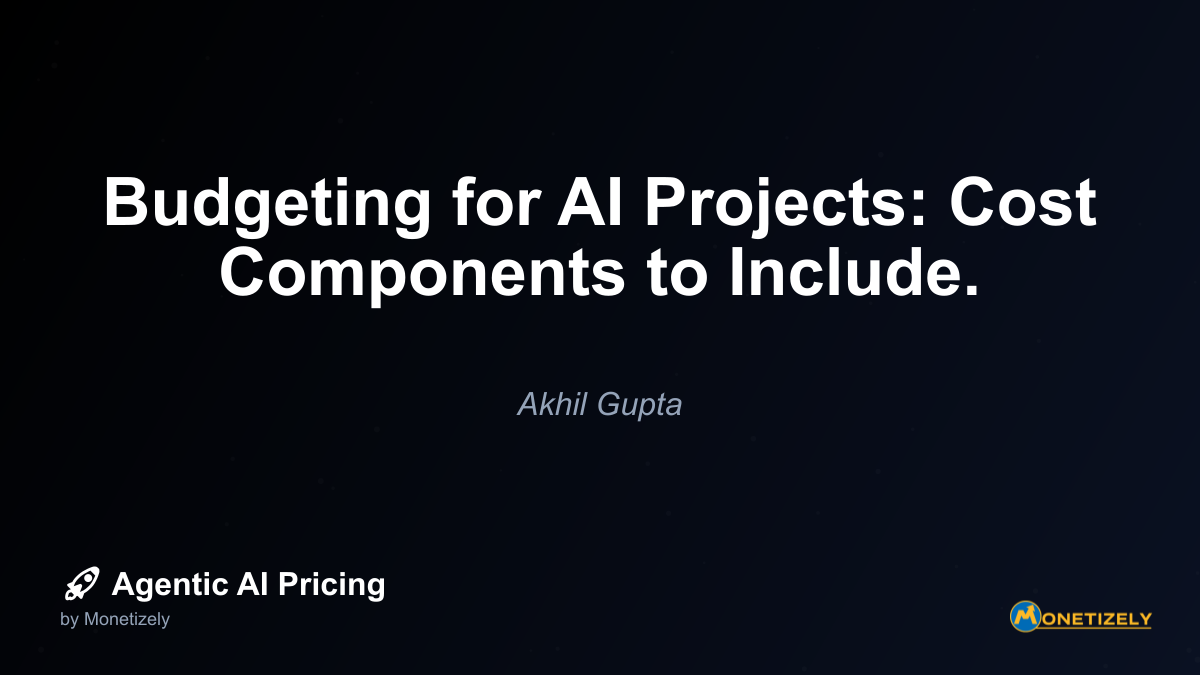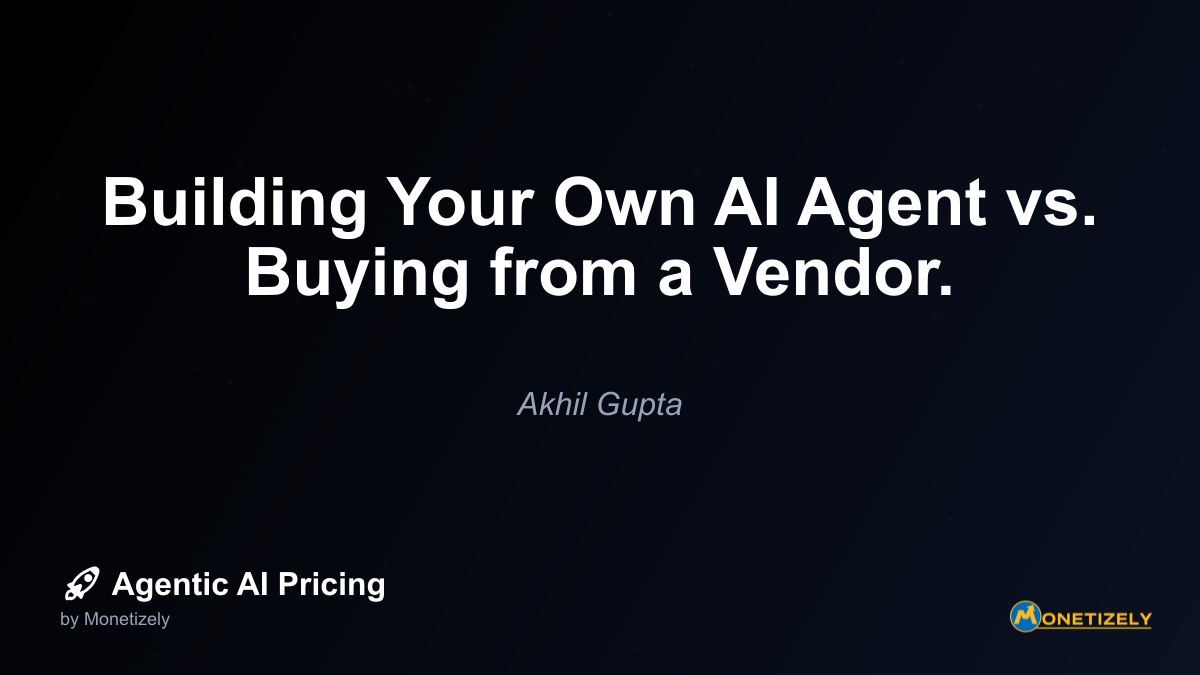· Akhil Gupta · Implementation Strategies · 4 min read
Choosing the Right AI Vendor: Evaluation Checklist.
AI and SaaS Pricing Masterclass
Learn the art of strategic pricing directly from industry experts. Our comprehensive course provides frameworks and methodologies for optimizing your pricing strategy in the evolving AI landscape. Earn a professional certification that can be imported directly to your LinkedIn profile.
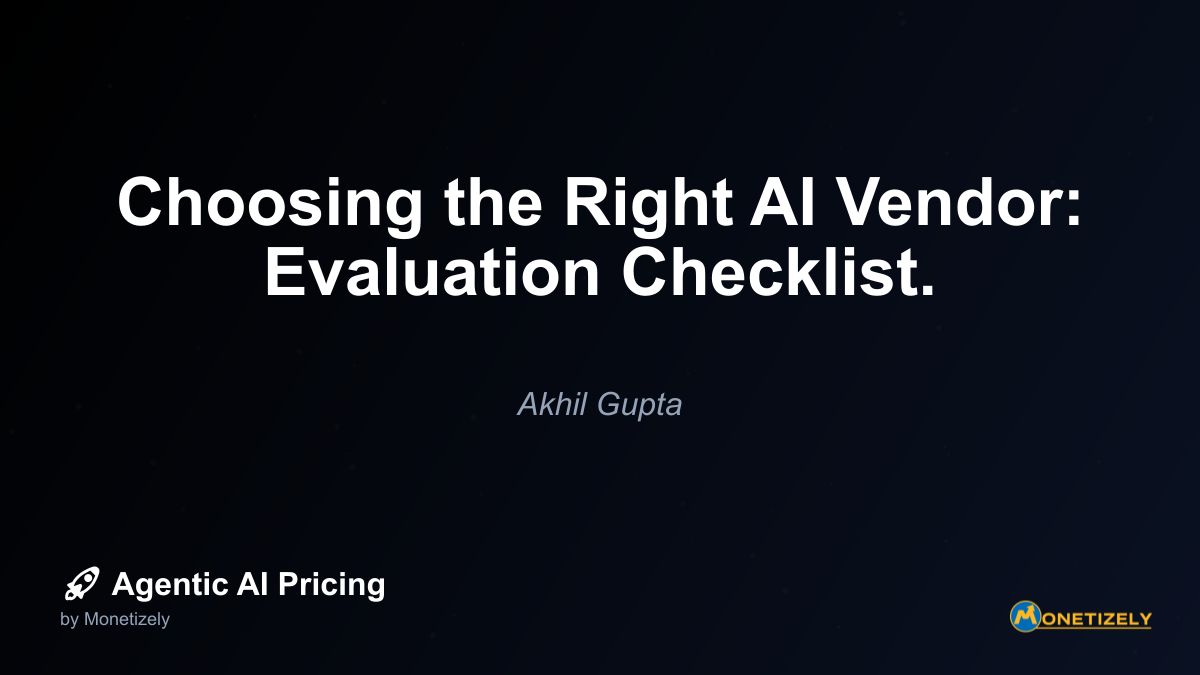
Examine the vendor’s pricing structure for transparency and alignment with your usage patterns:
- Subscription vs. usage-based pricing
- Per-user vs. per-organization licensing
- API call or token-based pricing
- Storage and data processing costs
- Model training and fine-tuning fees
- Professional services pricing
- Volume discounts and enterprise agreements
- Hidden costs (integration, support, etc.)
Create cost projections based on your expected usage patterns, including best and worst-case scenarios. Watch for pricing structures that could lead to unpredictable costs as your usage scales.
Contract Flexibility and Terms
Review contract terms carefully for flexibility and fairness:
- Contract duration options
- Early termination provisions
- Auto-renewal terms
- Price increase limitations
- Service level guarantees
- Data ownership clauses
- Intellectual property rights
- Liability limitations
- Confidentiality provisions
Negotiate terms that provide appropriate protections while allowing flexibility as your needs evolve. Be particularly careful with data ownership and IP rights related to model training.
Total Cost of Ownership Calculation
Look beyond the direct vendor costs to understand the total cost of ownership:
- Implementation and integration costs
- Training and change management expenses
- Ongoing administration requirements
- Hardware or infrastructure requirements
- Data preparation and management costs
- Potential cost savings from automation
- Time-to-value considerations
The best vendors will help you understand the full cost picture and the expected return on investment timeframe.
Proof of Concept and Reference Checks
Before making a final decision, validate vendor claims through hands-on testing and reference checks.
Structured Proof of Concept
Design a structured proof of concept (POC) to test critical capabilities:
- Define clear success criteria
- Use realistic data samples
- Test primary use cases
- Evaluate performance metrics
- Assess user experience
- Test integration points
- Verify security controls
- Validate scalability claims
A well-designed POC should reveal any significant gaps between vendor claims and actual performance. Document all findings systematically.
Customer Reference Validation
Speak with existing customers in similar situations:
- Implementation experience
- Time to value realization
- Support quality
- Hidden challenges
- Feature gaps
- Cost expectations vs. reality
- Overall satisfaction
- Would they choose the vendor again?
Request references from organizations with similar use cases, scale, and industry. The best vendors will provide references willingly and have customers who enthusiastically endorse their solutions.
Third-Party Reviews and Analyst Reports
Supplement direct evaluation with independent perspectives:
- Industry analyst reports (Gartner, Forrester)
- Technology review sites
- User communities and forums
- Independent consultants
- Industry-specific AI evaluations
- Security researcher assessments
Look for patterns in third-party feedback, particularly regarding reliability, support quality, and hidden limitations.
Implementation Planning and Vendor Management
Once you’ve selected a vendor, proper implementation planning and ongoing management are critical for success.
Implementation Roadmap Development
Work with the selected vendor to create a detailed implementation plan:
- Clear milestones and deliverables
- Resource requirements (vendor and internal)
- Data preparation steps
- Integration development timeline
- Testing procedures
- User training approach
- Go-live strategy
- Success metrics and monitoring
The best vendors will have proven implementation methodologies based on past customer experiences.
Ongoing Vendor Management Strategy
Plan for effective long-term vendor management:
- Regular business reviews
- Performance metric tracking
- Feature request prioritization
- Escalation procedures
- Contract renewal strategy
- Competitive benchmarking
- User feedback collection
- Continuous improvement processes
Establish clear communication channels and expectations for both routine interactions and issue resolution.
Final Decision-Making Framework
With all evaluation areas covered, a structured decision-making framework helps ensure an objective selection:
- Create a weighted scoring system - Assign weights to evaluation categories based on their importance to your specific situation
- Score each vendor - Rate vendors in each category based on your evaluation findings
- Calculate weighted scores - Multiply category scores by their weights
- Identify deal-breakers - Flag any critical requirements that aren’t met
- Consider intangibles - Factor in cultural fit and relationship quality
- Perform sensitivity analysis - Test how changes in weights affect outcomes
- Document the decision rationale - Create a clear record of the decision process
This structured approach helps remove emotional biases and ensures your decision is based on factors most critical to your organization’s success.
Conclusion
Selecting the right AI vendor is a complex decision that requires careful evaluation across multiple dimensions. By using this structured checklist, you can significantly improve your chances of finding a vendor that meets your technical requirements, business needs, and long-term success criteria.
Remember that the best vendor isn’t necessarily the one with the most advanced technology, but rather the one that best fits your specific use cases, technical environment, and organizational culture. Take the time to conduct a thorough evaluation, involve stakeholders from across your organization, and validate vendor claims through hands-on testing and reference checks.
With the right AI vendor partnership, you can accelerate your organization’s AI journey and unlock significant value from artificial intelligence technologies. The investment in proper vendor evaluation pays dividends through smoother implementation, better user adoption, and stronger ROI from your AI initiatives.
Co-Founder & COO
Akhil is an Engineering leader with over 16+ years of experience in building, managing and scaling web-scale, high throughput enterprise applications and teams. He has worked with and led technology teams at FabAlley, BuildSupply and Healthians. He is a graduate from Delhi College of Engineering and UC Berkeley certified CTO.
Pricing Strategy Audit
Let our experts analyze your current pricing strategy and identify opportunities for improvement. Our data-driven assessment will help you unlock untapped revenue potential and optimize your AI pricing approach.

